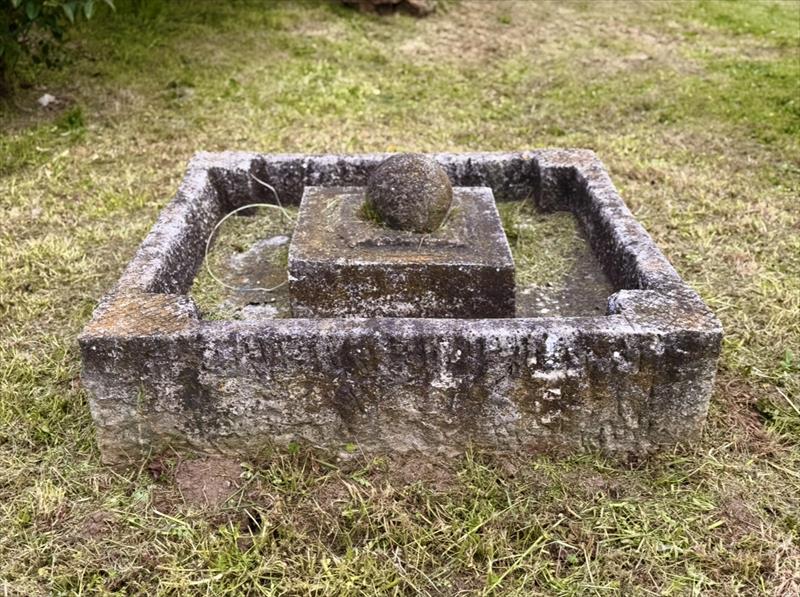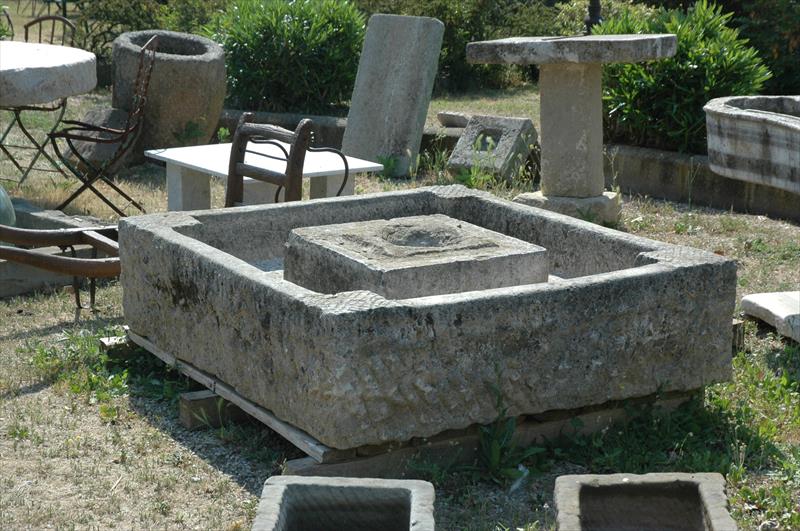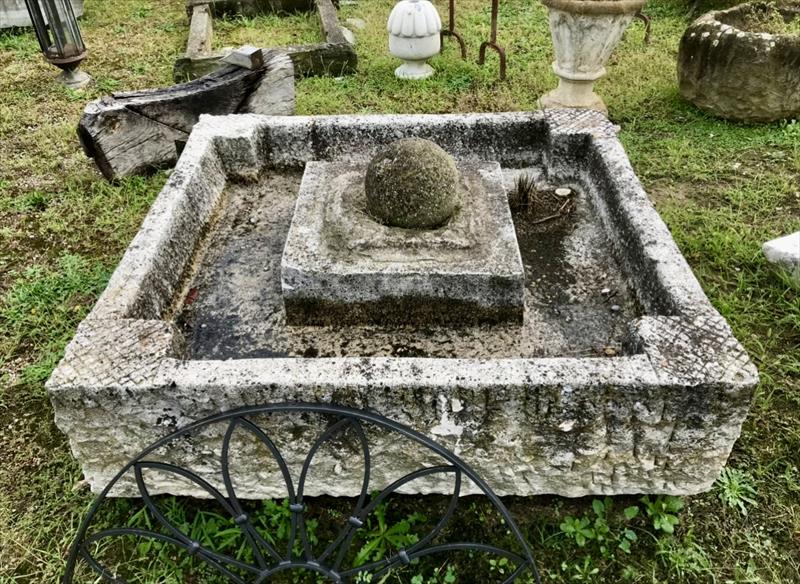Antique stone basin, hand-carved from a single block – Tuscany, 18th century
A square basin, originally conceived as a fountain or watering trough, from the Tuscan countryside of the 1700s.
Roughly carved by hand with a broad chisel, it features a raised central pedestal that once supported a decorative element — a spout, a nozzle, or a small statue — from which water would flow gently.
The stone, with its rough and authentic patina, bears the signs of water and time: incrustations, lichen, surface wear, moss, and seasons passed.
Its solid, essential geometry — devoid of ornament — speaks of a functional origin: to collect or distribute water. Not a showpiece, but a true water point, meant to ease the summer heat.
One can easily imagine it at the center of a courtyard, aligned with the entrance path of a refined rural farmhouse: a domestic source of water, both practical and discreetly ornamental.
A testament to a hardworking, rurally elegant Tuscany — where land was tilled, but homes were also lived in with quiet dignity.
- Material: Grey Stone
- Size: cm 142 x 54 h
- Condition: Tobe restored
- Period: Late 17th century /Early 18th century
- State: Good conditions




